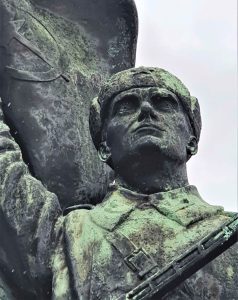
After the fall of the Berlin Wall, debates occurred in all Central and Eastern European countries about what should be done with the public monuments to socialist ideology. After considering destroying them in Hungary, the authorities finally decided to keep the statues erected during the socialist period and display them in a dedicated park. Memento Park was inaugurated in 1993 in Budapest’s 22nd district, along Route 7. Designed by the architect Áko Eleodn, it aimed to preserve this heritage and create “a space for reflection and critical analysis”(1). It’s a gamble that has paid off, as the atmosphere of this singular place captivates visitors.
The size of the statues, the space between them, and the propaganda museum set up in the park give visitors a clear idea of how propaganda and the cult of personality came to be imposed on the citizens of socialist countries. The labels accompanying the statues on display don’t say much. Here, it’s a question of traveling through time, of feeling rather than reading. The Memento Park, though dilapidated, has the power to transport visitors to another time and place.
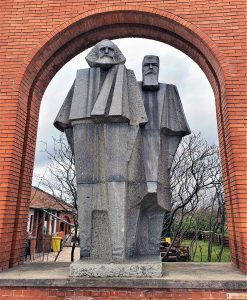
At the entrance to the park, Karl Marx and Friedrich Engels greet visitors with stern stares.
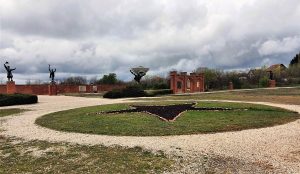
Memento Park is divided into six large circles around which the statues are arranged. A seventh circle, decorated with the Communist star, is placed in the middle of the park.
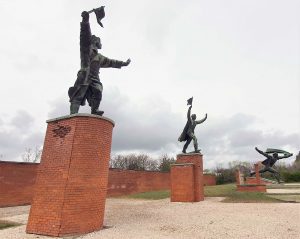
In the foreground are the statues of Captains Steinmetz and Ostapenko, who died during the Nazi siege of Budapest in 1944. Separated for decades in the Hungarian capital, they are finally reunited.
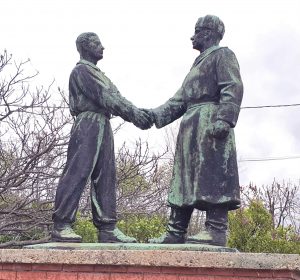
The Soviet-Hungarian Friendship Memorial shows a Hungarian worker sincerely offering his friendship, with both hands, to a more reserved Soviet soldier.
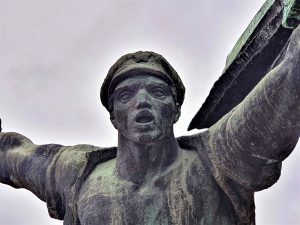
Monument to the Republic of Councils, based on a revolutionary poster from 1919.
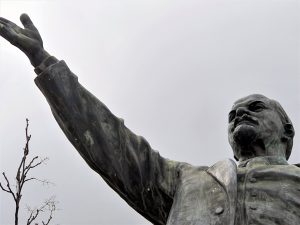
The statue of Lenin was erected on 7 November 1958 at the entrance to the Csepel metallurgical plant after Nikita Khrushchev, visiting Budapest in April 1958, was surprised that there was no monument to remind workers of the power of communist ideology.
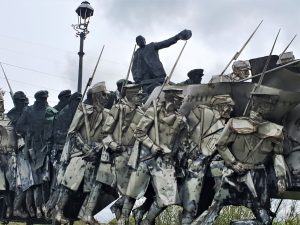
The Béla Kun memorial was inaugurated in 1986 to mark the 100th anniversary of the birth of the political leader of Hungary’s short-lived Republic of Councils, who fell victim to the massive Stalinist purges and was rehabilitated in 1956.
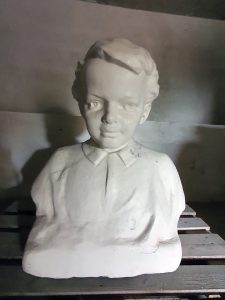
As a child (aged 4), Lenin symbolizes purity and confidence in a radiant future. His cult was designed to appeal to young socialists.
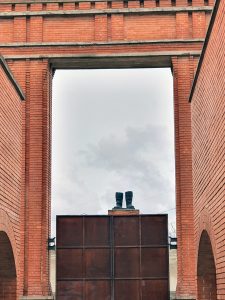
Stalin’s boots are the only remnant of the dictator's statue destroyed by the mob during the 1956 revolution.
Note:
(1) Ákos Réthly, In the shadow of Stalin’s Boots, Budapest, 2022.
Thumbnail: Destroyed in 1956 but rebuilt in 1958, the statue of the Red Army soldier is 6 meters high.
Link to the French version of the article
* Assen Slim (text and photos) is an economist and university professor (INALCO).
To quote this article: Assen SLIM (2023), “Memento Park in Budapest: under the Gaze of the Remnants of Socialism,” Regard sur l’Est, 17 July.
